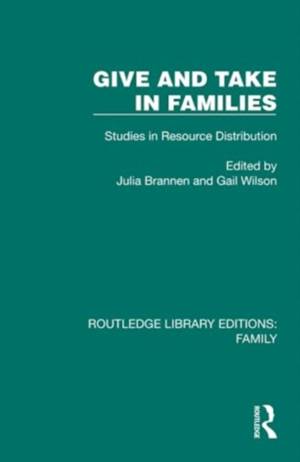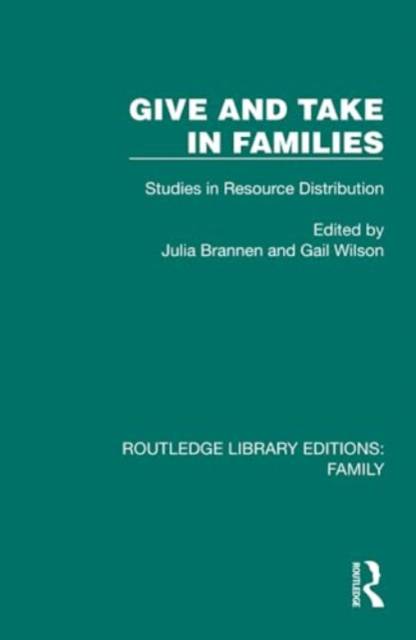
- Afhalen na 1 uur in een winkel met voorraad
- Gratis thuislevering in België vanaf € 30
- Ruim aanbod met 7 miljoen producten
- Afhalen na 1 uur in een winkel met voorraad
- Gratis thuislevering in België vanaf € 30
- Ruim aanbod met 7 miljoen producten
Give and Take in Families
Studies in Resource Distribution
Omschrijving
Originally published in 1987, now with a new preface, the focus of this book is the distribution of material resources, notably money, work, care and food, within and between households. Hitherto, social policy research had tended to roll households and families into one and consider them as 'private' spheres which only connected with society via the male head of household - the 'breadwinner'. Examination of resource distribution had stopped short at the door of the household.
The contributors to Give and Take in Families open up the 'Black Box' of the family and explore the assumption that resources are equitably distributed between household members. A dominant concern is with gender relations. Each study attempts to make women - as resources in caring for other people, as providers of income, as transformers of income into goods and services - visible in the household unit. Findings from nine empirical studies are presented, examining resource distribution in relation to the composition of households, and the life cycles and life experiences of household members. A wide variety of household types is considered, and attention is given to households undergoing changes (such as divorce and unemployment) that are likely to have major implications for household structure and resources.
The implications of these innovative and thought-provoking studies for social policy are considerable, with relevance to the fields of inequality and income support, the provision of care for children and the elderly, the labour market and divorce law. This book will still appeal to practising researchers and students in the social sciences, particularly women's studies.
Specificaties
Betrokkenen
- Uitgeverij:
Inhoud
- Aantal bladzijden:
- 210
- Taal:
- Engels
- Reeks:
Eigenschappen
- Productcode (EAN):
- 9781032530031
- Verschijningsdatum:
- 9/08/2023
- Uitvoering:
- Hardcover
- Formaat:
- Genaaid
- Afmetingen:
- 140 mm x 216 mm
- Gewicht:
- 408 g

Alleen bij Standaard Boekhandel
Beoordelingen
We publiceren alleen reviews die voldoen aan de voorwaarden voor reviews. Bekijk onze voorwaarden voor reviews.










